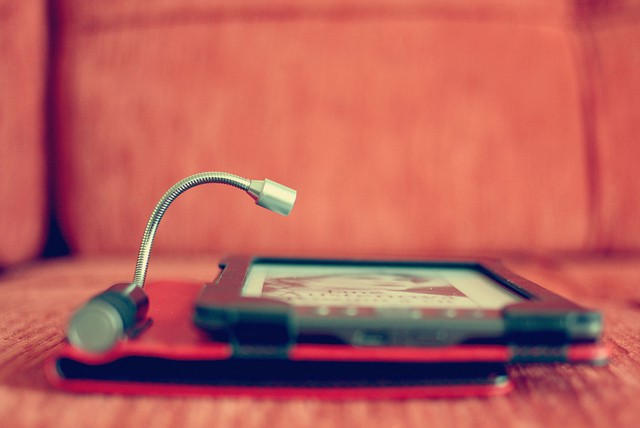Why Don’t Ebooks Have In-book Ads? Because We Don’t Read Enough

Buzzfeed News just released a longform look at the ebook industry, focusing on a specific intersection of metrics: what it means when publishers know exactly how much of an ebook you actually read.
Most people who buy The Goldfinch don’t actually finish it. According to [Kobo’s] data, less than half of Canadian and British Kobo readers in 2014 made it to the end of Donna Tartt’s behemoth novel, one of the best-selling of the year.
I read a lot, and I’ll be the first to admit that I often go on nighttime public library website binges where I check out a bunch of ebooks, quickly tap through the first chapters to see which ones I want to read most, and let the rest of them languish on an Amazon server somewhere until the library recollects them.
I’ve failed to finish 1Q84 twice, only read the first few chapters of Guns, Germs, and Steel, and even though I’ll say that Anne Elliot is my favorite Austen heroine (because of the 1995 movie) my Kindle will tell you that I’ve started Persuasion a handful of times and never, ever made it to the end.
This prompts the question: should editors and publishers shape books specifically to ensure continued reader engagement? Buzzfeed jokes about an editor saying “Excuse me, Mr. Joyce, you’re losing a lot of Kindle Fire readers here in this third section. Maybe tighten it up a smidge?” but you can see a situation in which publishing houses would work to gamify books the same way that Steam games offer badges to encourage users to play games to completion. In a recent Judge John Hodgman episode, John Hodgman lamented that he couldn’t get badges for reading books, and that if he could track his book stats online, he might be encouraged to read more.
However, Buzzfeed reports that, for the most part, publishers don’t care if you finish a book — they only care if you buy it.
“The truth of the matter is people have been picking up books and not finishing them for a long time,” [William Morris Endeavor agent Claudia] Ballard told BuzzFeed News. “At the end of the day, a unit sold is still a unit sold.”
In fact, there’s only one scenario in which reader completionism would be a factor in ebook publication:
For engagement to rival sales purely as a measure of commercial importance, and as a factor in acquisitions and editing, books would have to be monetized in a much different way: namely, in-book ads.
In other words: publishers will only start seriously worrying about whether you finish The Goldfinch if they need to ensure you get exposed to every possible ad layered between the chapters.
Of course, anyone who’s spent any time on YouTube or Hulu these days knows that there’s an easy enough workaround: front-load the ads so you have to sit through them before you start reading. So why aren’t we seeing ads when we open books and when we transition between chapters? Amazon recently launched Special Offers, where you can pay less for your Fire or Kindle device in exchange for ads that appear as screensavers and banners, after all.
Buzzfeed reports that thus far, in-book advertising has failed, but not for the reasons you might think:
These kinds of experimental ads have been tried, and, according to independent publishing entrepreneur Richard Nash, they’ve mostly failed.
“As best as anyone can tell, it has to do with the fact that the average book is read by not that many people,” Nash told BuzzFeed News. “Advertising is a volume business and there’s not that much to sell when you’re talking about 18,000 eyeballs.”
Advertisers don’t think there are enough readers to make it worth their time. These are the same people who send out junk mail, knowing that the majority of people will toss it directly into the recycling bin. These are the people who have put advertisements on every possible surface except inside books because there aren’t enough readers to make it cost-effective.
I guess that means that seeing ads in ebooks will be a good day for the publication industry, for writers, and for readers everywhere.
Except for the part where we’ll have ads in ebooks.
I wonder if we can figure out exactly how much we can read — but no more! — to stay below that cost-effective threshold. Maybe we should all continue to check out dozens of ebooks from the library but only read one, to artificially lower engagement rates and keep the advertisers away.
Photo credit: Pavel P.
Support The Billfold
The Billfold continues to exist thanks to support from our readers. Help us continue to do our work by making a monthly pledge on Patreon or a one-time-only contribution through PayPal.
Comments